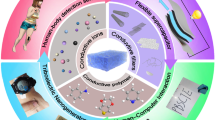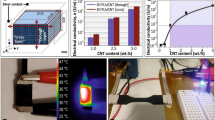Abstract
The influence of material properties on bacterial attachment to surfaces needs to be understood when applying polymer-based biomaterials. Positively charged materials can kill adhered bacteria when the charge density is sufficiently high [1] but such materials initially increase the adherence of some bacteria such asEscherichia coli [2]. On the other hand, negatively charged materials have been shown to inhibit initial bacterial adhesion [3], but this effect has only been demonstrated in relatively few biomaterial classes and needs to be evaluated using additional systems. Gradients in surface charge can impact bacterial adhesion and this was tested in our experimental setup.
Moreover, the evaluation of bacterial adhesion to biomaterials is required to assess their potential for biological applications. Here, we studied the bacterial adhesion ofE. coli andBacillus subtilis on the surfaces of acrylonitrile-based copolymer samples with different amounts of 2-methyl-2-propene-1-sulfonic acid sodium salt (NaMAS) comonomer. The content related to NaMAS based repeating units nNaMAS varied in the range from 0.9 to 1.5 mol%.
We found a reduced colonized area ofE. coli for NaMAS containing copolymers in comparison to pure PAN materials, whereby the bacterial colonization was similar for copolymers with different nNaMAS amounts. A different adhesion behavior was obtained for the second tested organismB. subtilis, where the implementation of negative charges into PAN did not change the overall adhesion pattern. Furthermore, it was observed thatB. subtilis adhesion was significantly increased on copolymer samples that exhibited a more irregular surface roughness.
Similar content being viewed by others
References
H. Murata, R. R. Koepsel, K. Matyjaszewski, A.J. Russell, Biomaterials 28, 4870 (2007).
G. Harkes, J. Feijen, J. Dankert, Biomaterials 12, 853 (1991).
N. N. Lawrence, J. M. Wells-Kinsbury, M. M. Ihrig, T. E. Fangman, F. Namavar, C. L. Cheung, Langmuir 28, 4301 (2012).
N. Scharnagl, B. Hiebl, K. Trescher, M. Zierke, M. Behl, K. Kratz, F. Jung, A. Lendlein, Clinical Hemorheology and Microcirculation 52, 295–311 (2012).
K. Hayashi, N. Morooka, Y. Yamamoto, K. Fujita, K. Isono, S. Choi, E. Ohtsubo, T. Baba, B. L. Wanner, H. Mori, T. Horiuchi, Molecular Systems Biology 2:2006.0007 (2006).
F. C. Neidhardt, P. L. Bloch, D. F. Smith, Journal of Bacteriology 119 (3), 736–747 (1974).
W.S. Rasband. ImageJ, U.S. National Institutes of Health, Bethesda, Maryland,USA, imagej.nih.gov/ij/ (1997–2012).
R Core Team, R: A language and environment for statistical computing. R Foundation for Statistical Computing, Vienna, Austria. URL http://www.R-project.org/ (2013).
Author information
Authors and Affiliations
Rights and permissions
About this article
Cite this article
Landsberger, P., Boenke, V., Gorbushina, A.A. et al. Bacterial attachment on poly[acrylonitrile-co-(2-methyl-2-propene-1-sulfonic acid)] surfaces. MRS Online Proceedings Library 1569, 85–90 (2013). https://doi.org/10.1557/opl.2013.832
Published:
Issue Date:
DOI: https://doi.org/10.1557/opl.2013.832




